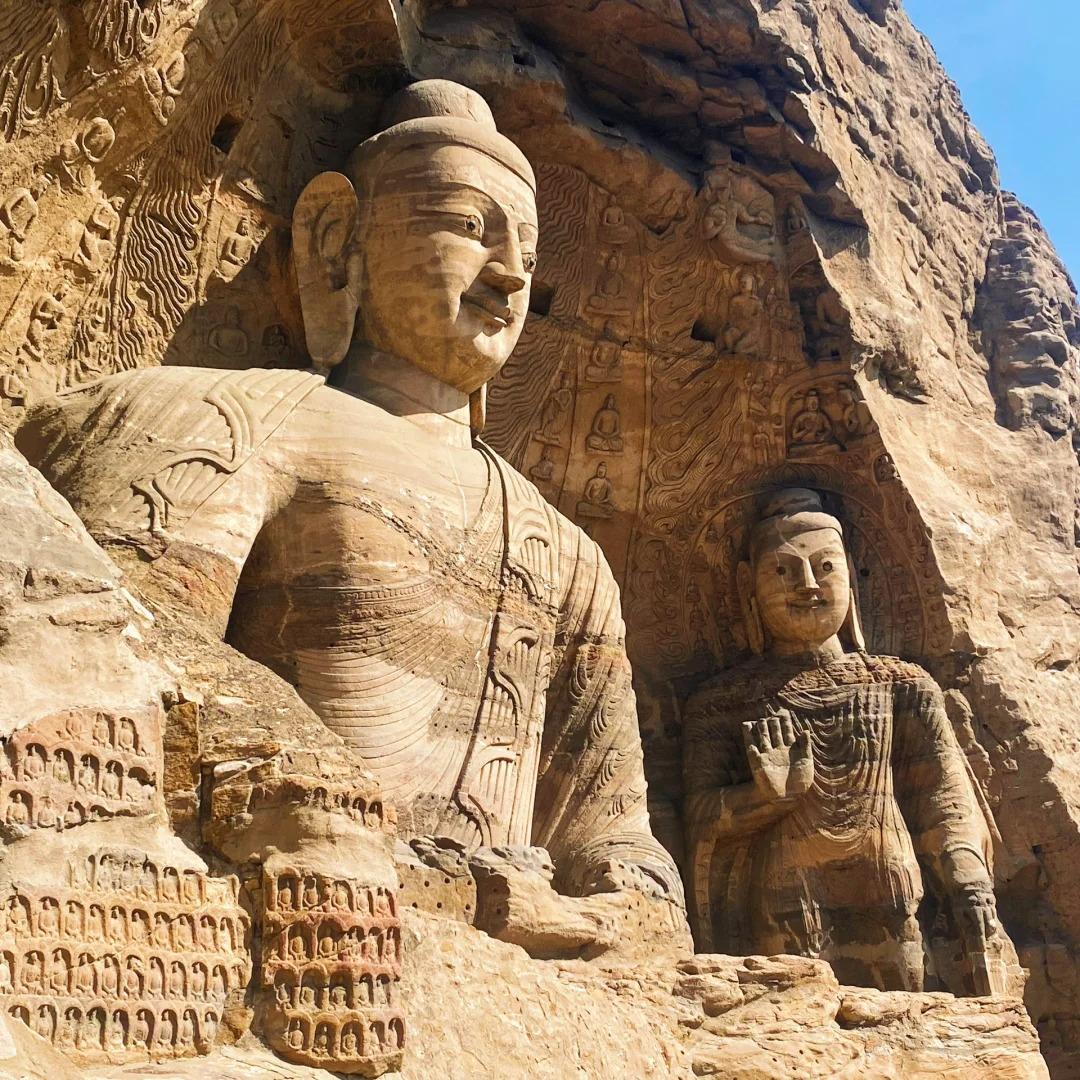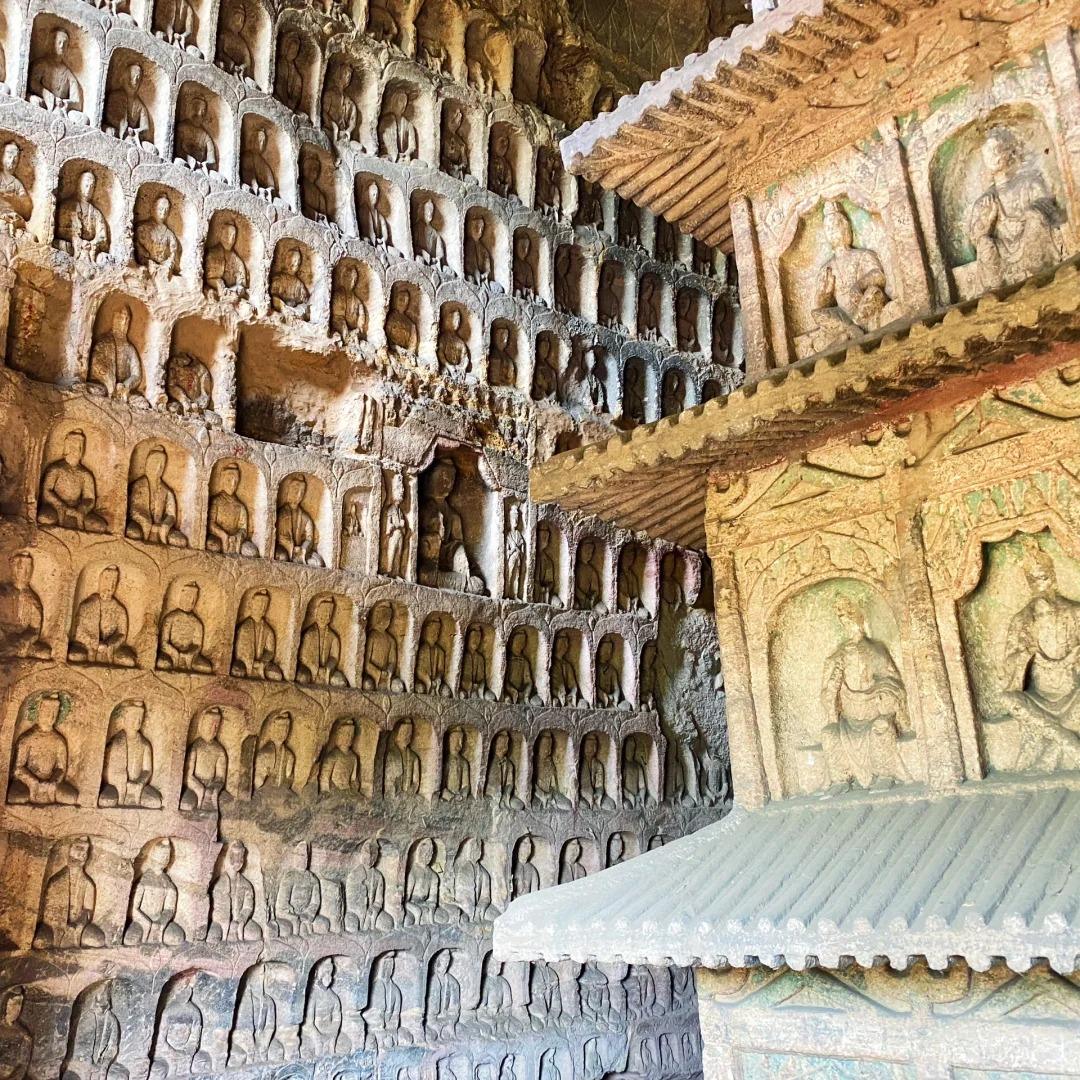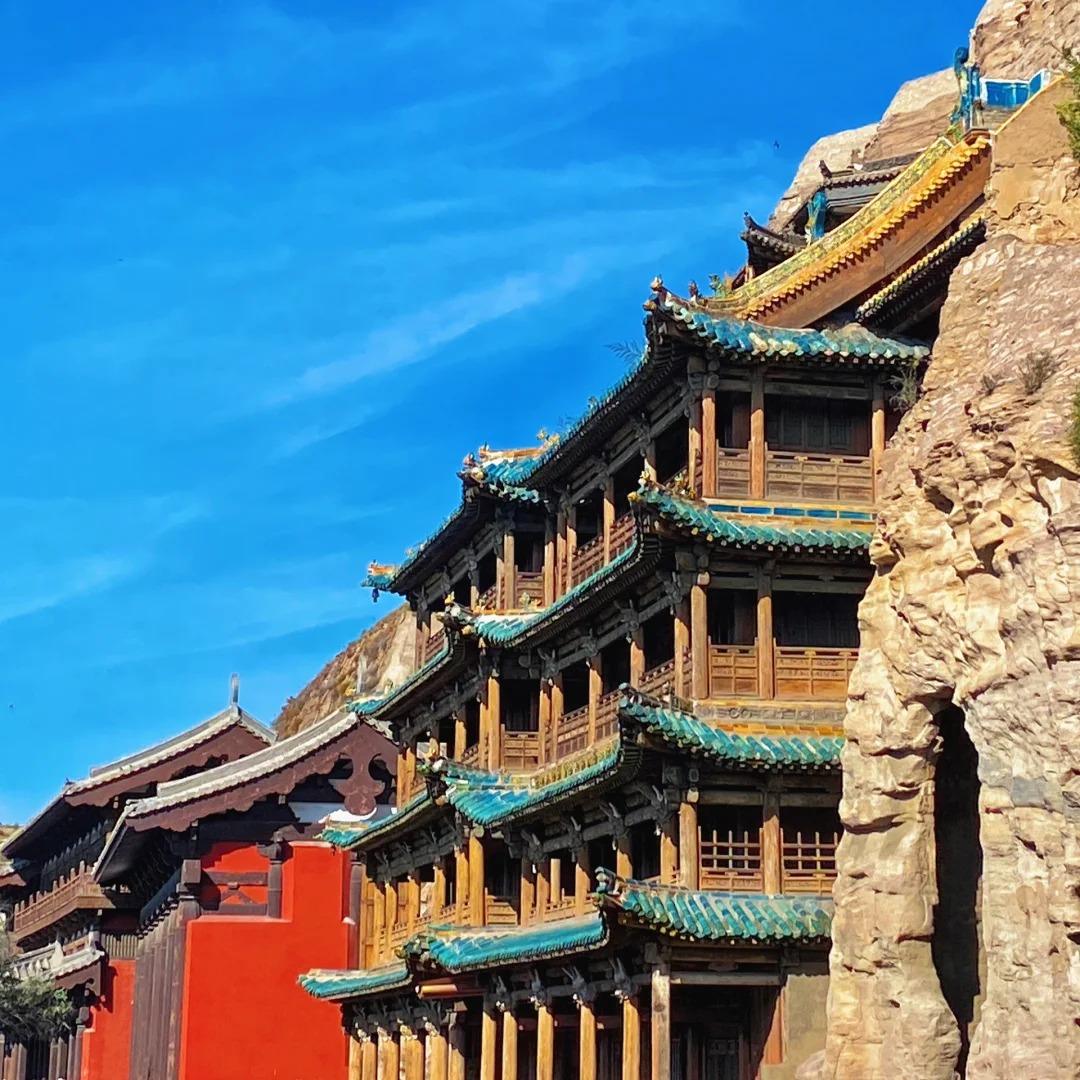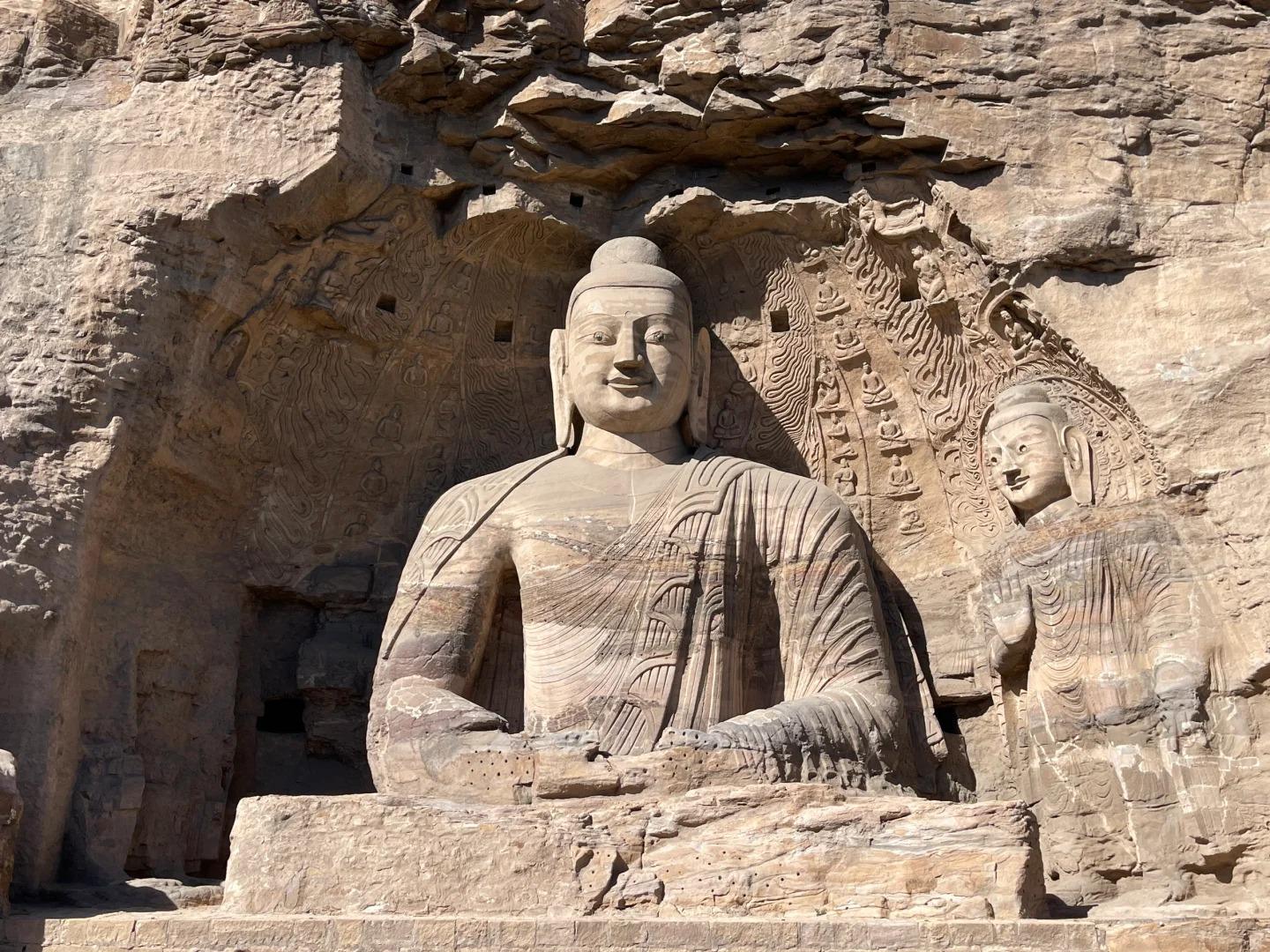Visiting Information
| Information | Details |
|---|---|
| Chinese Name | 云冈石窟 (Yúngāng Shíkū) |
| Location and Address | Wuzhou Western Street, Datong City, Shanxi Province, China |
| Opening Time/Hours | 8:00 AM – 5:30 PM (May to October) 8:30 AM – 5:00 PM (November to April) |
| Entrance Fee | CNY 120 (March to November) CNY 60 (December to February) |
| How to Get There | By Metro: Not available By Bus: Take Bus 3, 4, 9, 17, 32 or K6 to Yungang Grottoes stop By Taxi: Available from Datong city center (about 30-40 minutes) |
| Best Time for Visit | April to October; avoid national holidays if possible |
| Contact Info | +86 352 303 1608 Email: [email protected] |
Overview
The Yungang Grottoes, located in Datong City, Shanxi Province, China, are a masterpiece of early Chinese Buddhist cave art. Carved into the sandstone cliffs of Wuzhou Mountain, these grottoes comprise 252 caves and 51,000 statues, representing the outstanding achievement of Buddhist cave art in China in the 5th and 6th centuries. Recognized as a UNESCO World Heritage Site in 2001, the Yungang Grottoes are one of the three most famous ancient Buddhist sculptural sites in China, alongside the Longmen Grottoes and Mogao Caves.
Historical Background
The construction of the Yungang Grottoes began in 460 AD during the Northern Wei Dynasty (386-534 AD). The project was initiated by the monk Tan Yao with the support of the Wei court, as Buddhism was adopted as the state religion. The majority of the caves were completed in a 60-year period, between 460 and 520 AD. The grottoes represent the successful fusion of Buddhist religious symbolic art from south and central Asia with Chinese cultural traditions, creating a new form of artistic expression native to China.

Architectural Features
- Cave Layouts: The Yungang Grottoes feature a variety of cave layouts, including central-pillared caves, caves with large Buddha statues, and small niches. The central-pillared caves, such as Cave 6, are particularly noteworthy for their architectural complexity, resembling wooden temple structures.
- Colossal Buddhas: Caves 5 to 13, known as the “Tan Yao Caves,” house some of the most impressive colossal Buddha statues. These enormous sculptures, some reaching heights of over 15 meters, demonstrate the grandeur and power of Buddhist art during the Northern Wei period.
- Relief Carvings: The walls, ceilings, and pillars of the caves are adorned with intricate relief carvings depicting Buddhist stories, celestial beings, and decorative patterns. These carvings showcase the high level of artistic skill and the rich iconography of Chinese Buddhism.
- Painted Surfaces: Although much of the original paint has faded over time, traces of vibrant colors can still be seen in some caves. These painted surfaces once brought the stone carvings to life with a riot of colors, enhancing the visual impact of the sculptures and reliefs.
Cultural Importance
The Yungang Grottoes hold immense cultural importance as a testament to the spread of Buddhism in China and the artistic achievements of the Northern Wei Dynasty. They represent a crucial period in the history of Chinese Buddhist art, showcasing the evolution from early Indian influences to a distinctly Chinese style. The grottoes also provide valuable insights into the religious, social, and cultural life of 5th and 6th century China. As a symbol of cultural exchange along the ancient Silk Road, the Yungang Grottoes continue to be a source of inspiration for artists, scholars, and pilgrims from around the world.
Surrounding Attractions
- Yungang Grottoes Museum: Located near the grottoes, this modern museum houses artifacts recovered from the site and provides detailed information about the history and significance of the Yungang Grottoes. Interactive displays and multimedia presentations offer visitors a comprehensive understanding of the site’s cultural context.
- Hanging Temple: About 65 kilometers southeast of the Yungang Grottoes, the Hanging Temple (Xuankong Si) is a unique architectural wonder built into a cliff face. This temple, combining elements of Buddhism, Taoism, and Confucianism, provides a stark contrast to the rock-cut architecture of Yungang.
- Wooden Pagoda of Yingxian: Located about 70 kilometers south of Datong, this 67-meter-tall wooden pagoda is the oldest and tallest fully wooden pagoda in China. Built in 1056 during the Liao Dynasty, it offers visitors a chance to see a different aspect of Chinese architectural heritage.

Photography Opportunities
- Cave Interiors: The intricate carvings and massive Buddha statues inside the caves offer stunning photographic subjects. The play of light and shadow within the caves can create dramatic effects, especially in caves with larger openings.
- Exterior Landscapes: The sandstone cliffs housing the grottoes, set against the backdrop of the Wuzhou Mountains, provide excellent opportunities for landscape photography. The contrast between the natural scenery and the man-made caves can result in compelling compositions.
- Detail Shots: Close-up photographs of the relief carvings, Buddha faces, and architectural details can capture the exquisite craftsmanship of the grottoes. These shots can reveal textures and subtleties that might be missed by the naked eye.
Modern Importance
- Cultural Heritage Preservation: The Yungang Grottoes serve as a focal point for efforts in cultural heritage preservation in China. Ongoing conservation work at the site provides valuable experience and knowledge for protecting similar historical sites worldwide.
- Tourism and Economic Impact: As a major tourist attraction, the Yungang Grottoes contribute significantly to the local economy of Datong and the broader Shanxi Province. The site attracts both domestic and international visitors, supporting local businesses and employment.
- Educational Value: The grottoes provide an unparalleled resource for studying early Chinese Buddhist art, architecture, and history. Scholars and students from around the world visit and study the site, contributing to our understanding of Asian art history and cultural exchange.
- Cultural Diplomacy: As a UNESCO World Heritage Site, the Yungang Grottoes play a role in China’s cultural diplomacy efforts. The site showcases China’s rich cultural heritage to the world and promotes international cultural exchange and understanding.

FAQ
- What are the Yungang Grottoes famous for?
The Yungang Grottoes are famous for their extensive collection of ancient Buddhist cave art, including numerous large stone Buddha statues and intricate carvings. They are renowned for their historical significance, artistic achievement, and as an example of cultural exchange along the Silk Road. - What’s inside the Yungang Grottoes?
Inside the Yungang Grottoes, visitors can see 252 caves containing 51,000 Buddhist statues. These range from giant Buddha figures over 15 meters tall to tiny carvings. The caves also feature elaborate relief sculptures, painted surfaces, and architectural elements that mimic wooden temple structures. - Are the Yungang Grottoes free?
No, the Yungang Grottoes are not free. There is an entrance fee of CNY 120 from March to November, and CNY 60 from December to February. - Are the Yungang Grottoes worth visiting?
Yes, the Yungang Grottoes are definitely worth visiting. They offer a unique opportunity to see some of the finest examples of ancient Buddhist cave art in China. The scale and quality of the sculptures, combined with their historical significance, make them a must-see for anyone interested in Chinese history, art, or Buddhism. - What to do in the Yungang Grottoes?
At the Yungang Grottoes, visitors can explore the various caves and admire the ancient sculptures and carvings. You can also visit the on-site museum to learn more about the history and significance of the grottoes. Guided tours are available for a more in-depth understanding of the site. Photography (without flash) is allowed in most areas. - How do I get to the Yungang Grottoes in the local city?
From Datong city center, you can reach the Yungang Grottoes by taking buses 3, 4, 9, 17, 32, or K6 to the Yungang Grottoes stop. Alternatively, you can take a taxi, which takes about 30-40 minutes from the city center. Some hotels also offer shuttle services to the grottoes. - How to visit the Yungang Grottoes?
To visit the Yungang Grottoes, plan to spend at least half a day exploring. Purchase tickets at the entrance. Comfortable walking shoes are recommended as there’s a fair amount of walking involved. Consider hiring a guide or using an audio guide for a better understanding of the site’s history and significance. Start with the museum to get an overview before exploring the caves. Remember to bring water and sun protection, especially during summer months. Photography is allowed in most areas, but flash photography is prohibited to protect the ancient art.




